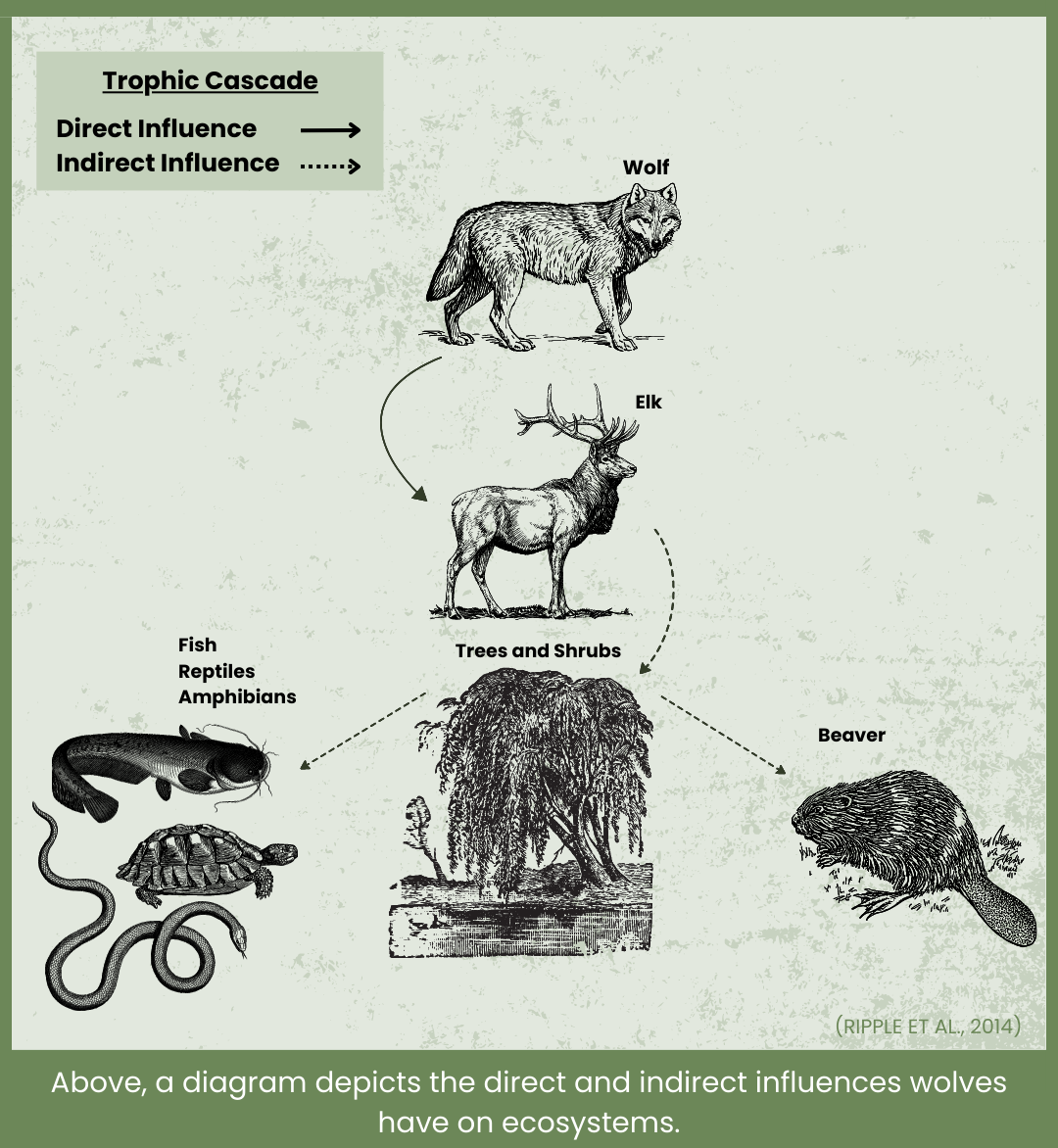Wildlife Research Project
Butterfly Effect & Beyond: Trophic Cascades
As the old saying goes: too much of a good thing is bad, and too much of a bad thing is... not too good either. The same can be said about the natural world – and while we are in no position to deem what is and isn’t bad, we ARE here to talk about the importance of balance.
Ecosystems thrive best when they are balanced. When an ecosystem is unbalanced, it can lead to changes in species dynamics and often has a profound impact on an ecosystem’s overall health. This ripple effect, also known as a trophic cascade, is closely tied to an ecosystem’s food chain and subsequent trophic levels.
Food chains are the relationships between different organisms within an ecosystem, with each organism serving as food for another. Trophic levels, on the other hand, refer to the position of an organism in a food chain, based on its source of energy. Occupying the first trophic level are primary producers, such as plants, which convert sunlight into energy. This energy is then passed up the food chain to herbivores, which occupy the second trophic level, and so on through carnivores and finally to top predators.
The balance of an ecosystem is achieved and maintained by the relationships and energy flow between these species. When one species' population changes, the change may influence the species above and below. For example, when the population of herbivores decreases, the population of carnivores that feed on them will also decrease, leading to a decrease in the top predators. This complex domino effect can also occur in the opposite direction – when an increase in one species leads to a decrease in others.
A prime example of this phenomenon was observed in Yellowstone National Park in 1926. When the last wolf was killed off in Yellowstone, a large predatory pressure was taken off elk in the area. As a result of this, elk populations increased to a point where even bears and cougars couldn’t control them. With very few predators, the elk rarely moved, over-browsing on aspen, cottonwood, and young willow trees found along stream banks. This eventually led to a decline in beavers.
Subsequently, the loss of beavers and erosion-protecting shrubbery led waterways to become shallow and warm. In turn, streams once teeming with life could no longer support fish, reptiles, and amphibians.

As you can imagine, Yellowstone National Park’s landscape was dramatically changed. It wasn’t until 1995 that the reintroduction of wolves, now known as a keystone species, began to restore the National Park back to its former balance.
Yellowstone’s trophic cascade serves as a powerful reminder of the interconnectedness of all organisms within an ecosystem and the power that we, as humans, hold to shape their future. By appreciating the far-reaching effects of our actions, we have the opportunity to admire (and sometimes restore!) meaningful balance. After all, small actions can have huge impacts in the world of trophic cascades.
Our project is made possible thanks to a passionate group of volunteers and strong collaborative partners.
You can learn more about our partners here.



